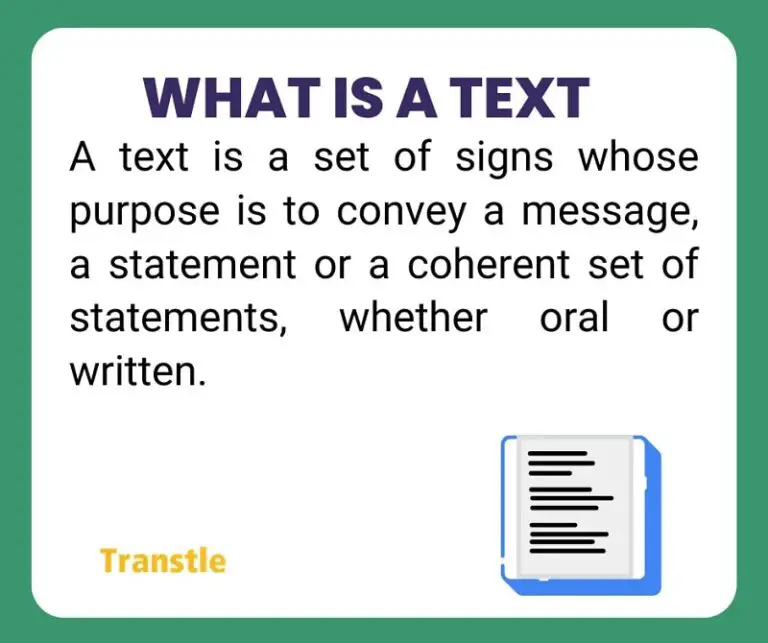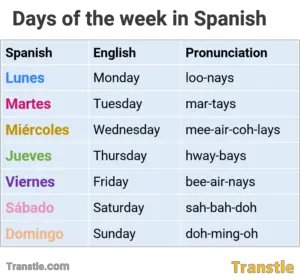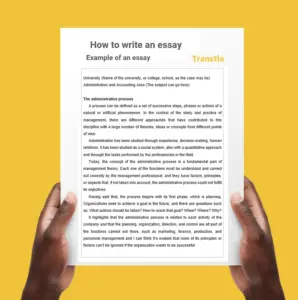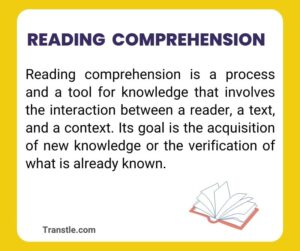Text: Definition, Structures, Types & Examples

The Text
A text is a set of signs whose purpose is to convey a message, a statement or a coherent set of statements, whether oral or written. It’s a fundamental tool for communication that allows transmitting a message. It is important to note that even any object or element that carries a meaning can be considered a text.
Printed Text
Printed text, one of the most common types, is characterized by being a set of codified signs belonging to a specific writing system: letters or graphic representations of the language that, together, give form to a message or meaning. Printed text is essential for learning and reading comprehension since it constitutes one of the key components that with the reader and the context, enable deep and meaningful reading.
Contents
Text Structures
Text structures are the skeleton upon which texts are built, providing them with order, coherence, and meaning. Their mastery is considered essential for any type of writing. These structures are served up as a guide for the reader, facilitating the understanding of the intended message.
Formal Structure
The formal structure of the text is the framework or structure that includes an introduction, body, and conclusion, as it is composed of three fundamental pillars:
- Introduction: Its main function is to present the central theme of the text and contextualize the reader. In this section, the problem, research question, or thesis that will be developed throughout the writing is introduced.
- Body: This is the body of the text, where the arguments, ideas, and data that support the thesis or central idea are presented. The development should present a logical progression, moving from general ideas to more specific concepts.
- Conclusion: In this section, the key points of the text are summarized, reinforcing the central idea and offering a final reflection or call to action. The conclusion should leave the reader with a clear understanding of the message conveyed.
See also: How to write an introduction
Semantic structure
The semantic structure of a text is the internal organization that ensures it conveys meaning and flows smoothly for the reader. It comprises two essential elements:
- Coherence: This refers to the text’s internal logic, the way ideas connect and develop progressively. A coherent text presents a clear guiding thread that leads the reader through the content.
- Cohesion: This focuses on the linguistic mechanisms that connect ideas and sentences within the text. These mechanisms include the use of pronouns, connectors, lexical references, and appropriate grammatical structures, all of which are related to syntax and vocabulary management. A cohesive text presents a natural flow and facilitates comprehension of the message.
Grammatical or linguistic structure
Grammatical or linguistic structure focuses on the proper use of language to ensure the clarity and accuracy of the message. It entails mastering the grammatical, syntactic, and lexical aspects of the language being used. Key elements of this structure include:
- Precise Vocabulary: Choosing the right words is crucial for conveying the message clearly and concisely. Avoid ambiguous or vague terms and opt for precise language that aligns with the text’s context.
- Correct Syntax: Syntax refers to the arrangement of words and phrases within sentences. Proper syntax allows for the construction of clear and understandable sentences, preventing confusion or ambiguity.
- Grammatical Rules: Adherence to grammatical rules is essential for crafting a correct and fluent text. This encompasses the proper use of punctuation, verb conjugations, agreement, and other grammatical elements.
Basic internal structures of texts
Texts can employ various internal structures to effectively convey information. Among the most common basic structures are the fact structure, the problem-solution structure, and the thesis-support structure.
- Fact Structure:
The fact structure serves to present objective and verifiable information without the need to establish a problem or advocate for a particular stance. Examples of texts employing this structure include narration and news reports. In these texts, the primary goal is to transmit accurate and unbiased information to the reader.
- Problem and Solution Structure:
The problem-solution structure introduces a problem or question and then proposes a solution backed by compelling arguments. This structure is prevalent in scientific articles, opinion essays, and argumentative texts. The main objective of this type of text is to persuade the reader of the validity of the proposed solution.
- Thesis-Support Structure:
The thesis-support structure resembles the problem-solution structure, but instead of presenting a problem, it asserts an idea or position and substantiates it with solid arguments and evidence. This structure is commonly found in academic and research texts. The main objective of this type of text is to convince the reader of the veracity of the presented thesis.
Types of text
Discursive orders embody the way texts are constructed, the manner in which authors express their ideas, and the fundamental elements that form their structure. These orders significantly impact aspects like the reader’s mental representation of the text, the way it stimulates their imagination, emotions, or sensations, and how the reader connects with the text.
Each discursive order possesses specific characteristics that must be adhered to in order to achieve the writer’s intended purpose. For instance, if the author aims to tell a story, they will employ narration; if they seek to convince the reader of something, they will utilize argumentation; if their goal is to inform the reader, they will use exposition.
It is crucial to recognize that the choice of discursive order is also intertwined with the text’s intention. For example, if the objective is to entertain, narration or description can be employed; if the goal is to persuade, argumentation or exposition can be utilized.
Below is a brief explanation of each discursive order to better illustrate the above.
- Narrative Text: This type of text consists of telling real or imaginary events that occur in a specific place and time.
- Descriptive Text: Descriptive texts depict a real or imaginary world using language. They clearly convey the characteristics of a person, animal, object, or circumstances of the described elements, often employing our senses of sight, smell, touch, and taste.
- Informative Text: This type of text provides precise and clear information about something specific.
- Expository Text: Expository texts present or explain information or knowledge to others using a logical structure and sequence.
- Argumentative Text: Argumentative texts receive this name because the author argues and tries to prove, refute, or justify a proposition. They provide reasons to support ideas and thus convince others.
- Instructional Text: Instructional texts aim to impart knowledge by accurately guiding the reader through ordered steps to achieve a given goal.
Read next



